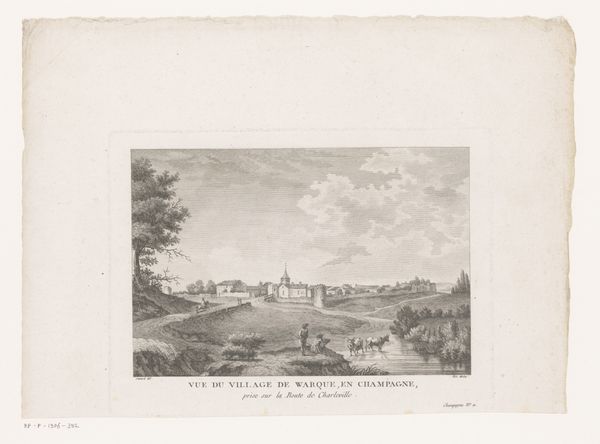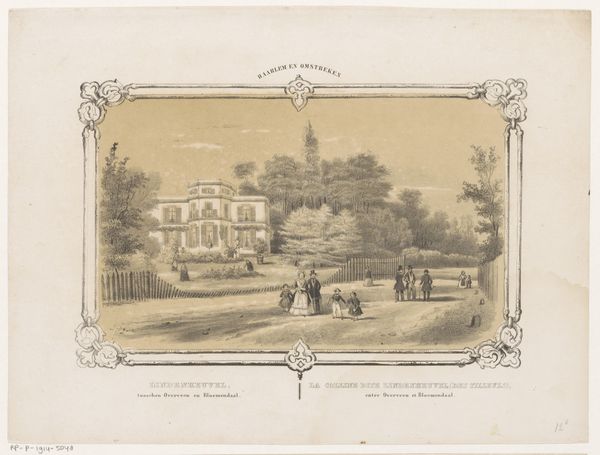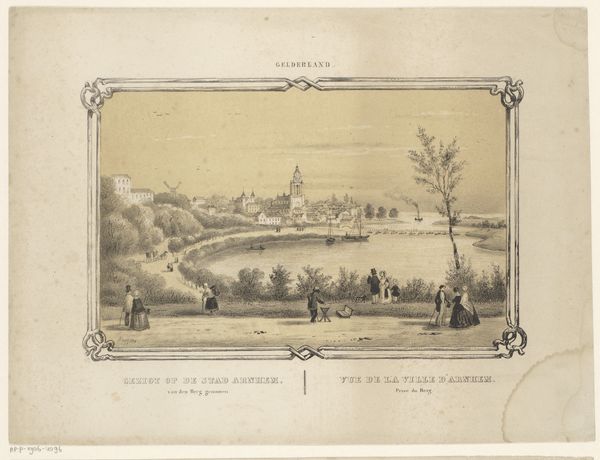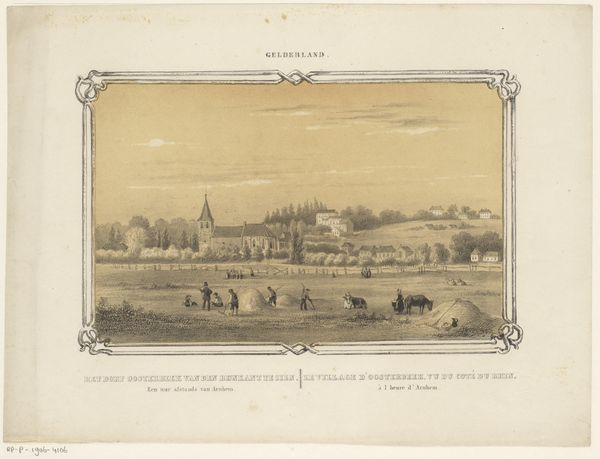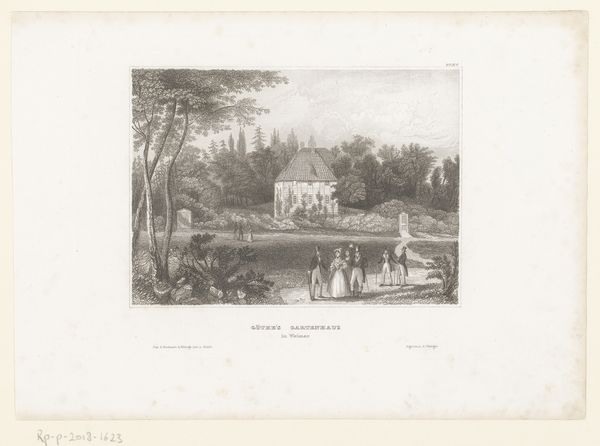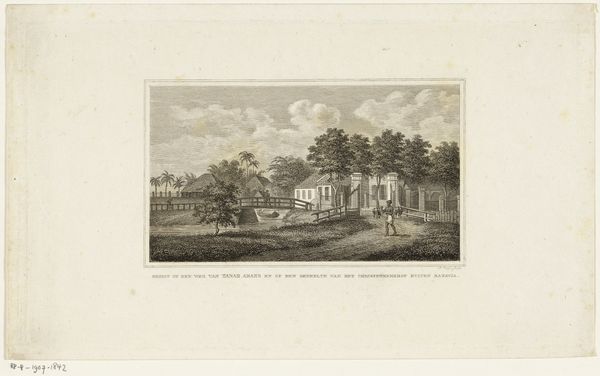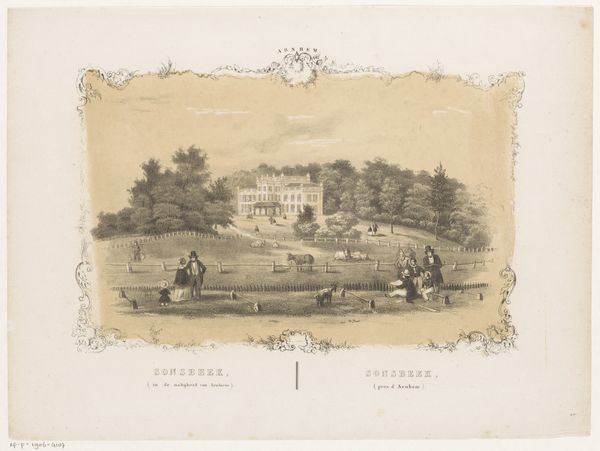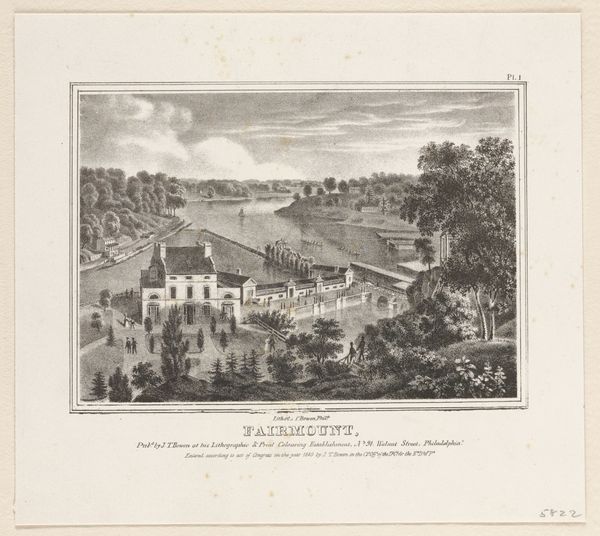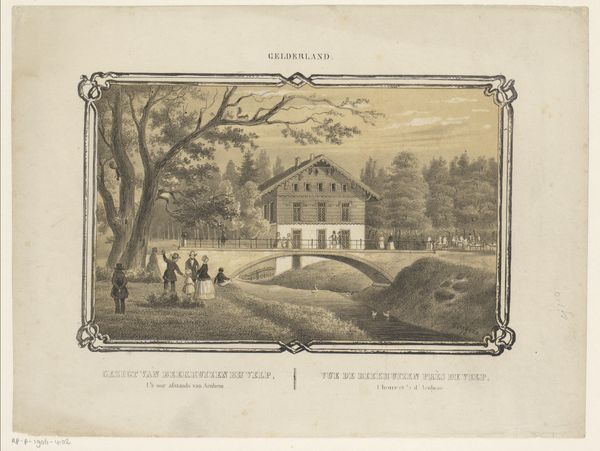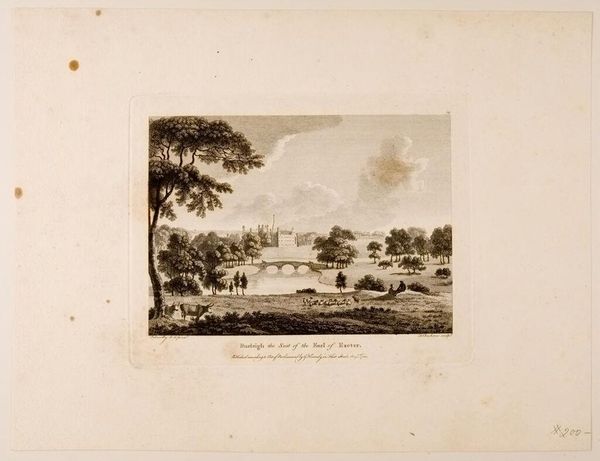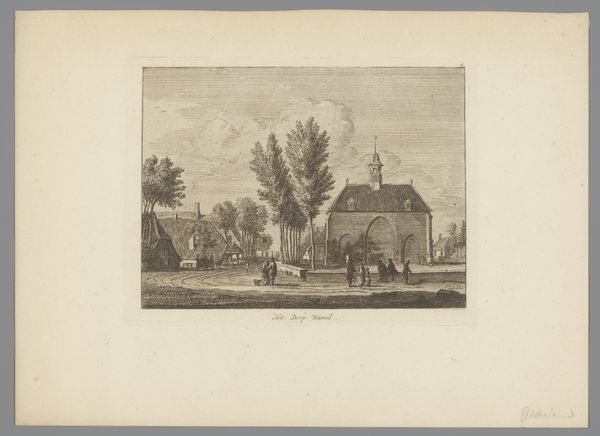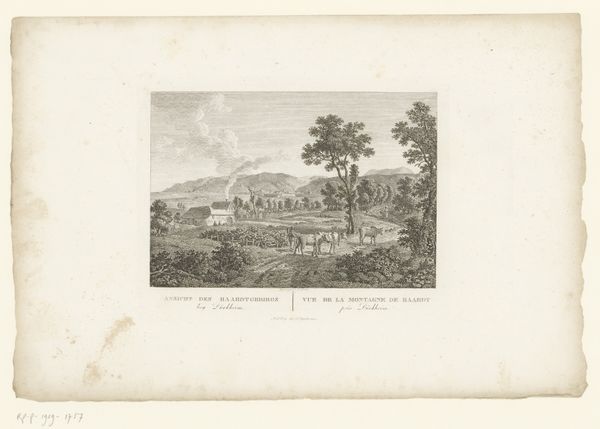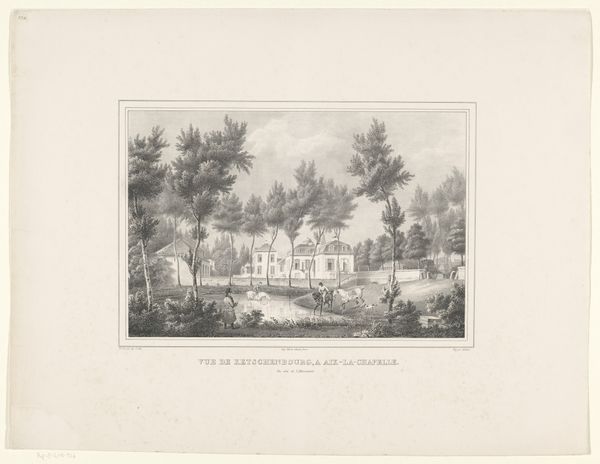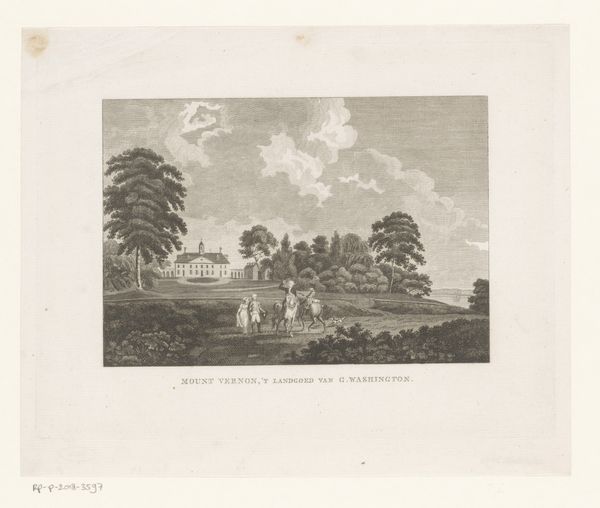
print, engraving
# print
#
landscape
#
cityscape
#
genre-painting
#
engraving
Dimensions: height 270 mm, width 355 mm
Copyright: Rijks Museum: Open Domain
Editor: This is "Gezicht op Oosterbeek," dating from 1812 to 1887, by Frederik Lodewijk Huygens. It's an engraving, a print, and it captures a lovely view of a village. What I find most compelling is how it seems to freeze a specific moment of rural life, almost like a photograph. What's your perspective? Curator: For me, this image speaks volumes about the means of production and labor of the period. It's not just a pretty landscape, but a document of the material realities of 19th-century Dutch life. The artist uses the printmaking medium itself—engraving—to illustrate that world. Editor: Could you elaborate on the connection between the medium and the message? Curator: Consider the engraving process. It involves meticulous, repetitive labor, mirroring the agricultural labor depicted in the scene. Look at the figures with the hay cart. Their livelihood depends on manual work. The print is made by hand, by labor. And furthermore, the ability to reproduce this image makes it a commodity available for purchase. How do you think this tension affects our reading of the landscape? Editor: That's fascinating. It's easy to overlook the labor behind both the image and the life it portrays. Thinking about it as a commodity too, that was probably consumed by people very different than the villagers pictured, right? Curator: Precisely. And the availability of prints allowed for wider dissemination of these images, influencing perceptions of the rural landscape and life, turning it into something desirable, consumed. I see layers of human intervention when considering both subject and creation of this work. Editor: So it’s not just a nice view, but also a piece of social commentary through material production. That really makes me think differently about the art I engage with. Thanks! Curator: Indeed. Examining art through a material lens can open up new layers of meaning and prompt conversations around what art truly is and for whom it is created.
Comments
No comments
Be the first to comment and join the conversation on the ultimate creative platform.
